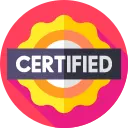About this Course
Certified Anesthesia Technician Course
This comprehensive course is designed to provide aspiring anesthesia technicians with the knowledge and skills necessary to excel in their role. As a certified anesthesia technician, you will play a crucial role in supporting anesthesia care providers and ensuring patient safety during surgical procedures.
Throughout this course, you will delve into various aspects of anesthesia technology, including equipment management, patient monitoring, anesthesia procedures, and emergency response. You will gain a deep understanding of the principles, techniques, and practices involved in delivering anesthesia services.
Course Objectives
By the end of this course, you will:
- Understand the role and responsibilities of an anesthesia technician in the healthcare team.
- Master the essential knowledge of anesthesia equipment, its setup, and maintenance.
- Learn about anesthesia drugs and their administration methods.
- Develop proficiency in patient monitoring techniques, including vital signs, anesthesia depth, and neuromuscular blockade.
- Gain hands-on experience in preparing and assisting with anesthesia procedures.
- Acquire the skills to respond effectively to anesthesia emergencies and complications.
- Explore infection control practices and safety protocols in the anesthesia setting.
- Understand the legal and ethical considerations relevant to anesthesia practice.
- Enhance your communication and teamwork skills to collaborate effectively with the healthcare team.
Course Outline
Module 1: Introduction to Anesthesia Technology
- Anesthesia team roles and responsibilities
- Anesthesia technology history and evolution
- Medical ethics and legal considerations
Module 2: Anesthesia Equipment and Instrumentation
- Overview of anesthesia machines and monitors
- Anesthesia workstations and circuits
- Anesthesia gas delivery systems
- Operating and troubleshooting anesthesia equipment
Module 3: Anesthesia Drugs and Pharmacology
- Common anesthesia drugs and their classifications
- Drug administration methods and routes
- Pharmacokinetics and pharmacodynamics
- Adverse reactions and side effects
Module 4: Patient Monitoring and Assessment
- Importance of patient monitoring during anesthesia
- Monitoring vital signs and hemodynamic parameters
- Anesthesia depth monitoring techniques
- Neuromuscular monitoring
Module 5: Anesthesia Procedures and Techniques
- Preparation of anesthesia equipment and supplies
- Anesthesia induction, maintenance, and emergence
- Intraoperative patient positioning and safety considerations
- Intravenous catheter placement and fluid management
Module 6: Anesthesia Emergencies and Complications
- Recognizing and responding to common anesthesia emergencies
- Management of airway obstruction and difficult intubation
- Anaphylactic reactions and allergy management
- Cardiopulmonary resuscitation (CPR) in
Sign in to enroll and start your certification.
External Resources
How to Get Certified

Complete the Course
Answer the certification questions by selecting a difficulty level:
Beginner: Master the material with interactive questions and more time.
Intermediate: Get certified faster with hints and balanced questions.
Advanced: Challenge yourself with more questions and less time

Earn Your Certificate
To download and share your certificate, you must achieve a combined score of at least 75% on all questions answered.
Course Features
Honorary Certification
Receive a recognized certificate before completing the course.
Learning Pack
Get a carefully curated set of materials to help you learn better in this course.
Pricing Plans
Currency
Sign in to change your currency
I'm not ready to enroll?
Our team is here to help you choose the best options for your learning goals.
Frequently Asked Questions
For detailed information about our Certified Anesthesia Technician course, including what you’ll learn and course objectives, please visit the "About This Course" section on this page.
The course is online, but you can select Networking Events at enrollment to meet people in person. This feature may not always be available.
The course doesn't have a fixed duration. It has 20 questions, and each question takes about 5 to 30 minutes to answer. You’ll receive your certificate once you’ve answered most of the questions. Learn more here.
The course is always available, so you can start at any time that works for you!
We partner with various organizations to curate and select the best networking events, webinars, and instructor Q&A sessions throughout the year. You’ll receive more information about these opportunities when you enroll. This feature may not always be available.
You will receive a Certificate of Excellence when you score 75% or higher in the course, showing that you have learned about the course.
An Honorary Certificate allows you to receive a Certificate of Commitment right after enrolling, even if you haven’t finished the course. It’s ideal for busy professionals who need certification quickly but plan to complete the course later.
The price is based on your enrollment duration and selected features. Discounts increase with more days and features. You can also choose from plans for bundled options.
Choose a duration that fits your schedule. You can enroll for up to 7 days at a time.
No, you won't. Once you earn your certificate, you retain access to it and the completed exercises for life, even after your subscription expires. However, to take new exercises, you'll need to re-enroll if your subscription has run out.
To verify a certificate, visit the Verify Certificate page on our website and enter the 12-digit certificate ID. You can then confirm the authenticity of the certificate and review details such as the enrollment date, completed exercises, and their corresponding levels and scores.
Can't find answers to your questions?
Discussion Forum
Join the discussion!
No comments yet. Sign in to share your thoughts and connect with fellow learners.






